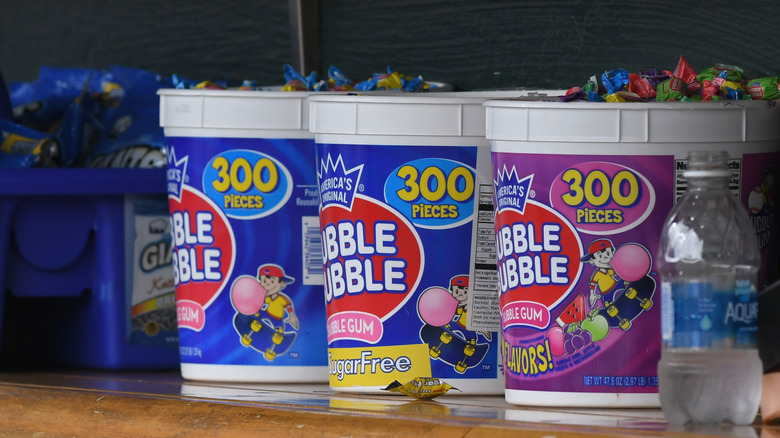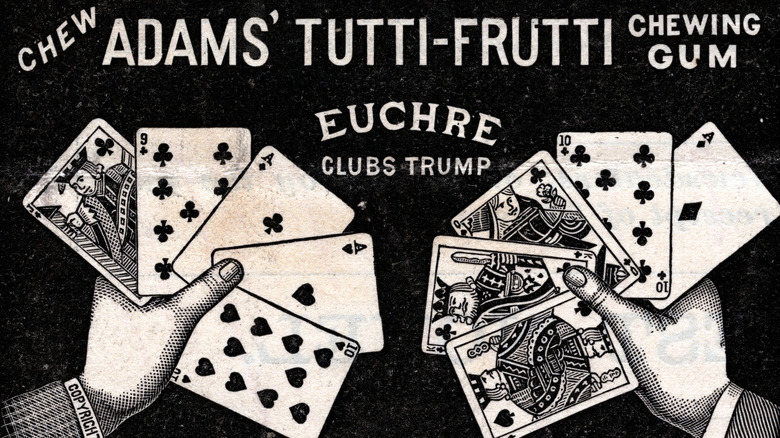What Is Bubblegum Flavor Actually?
Bubblegum is as American as apple pie, and just thinking about it conjures up nostalgic memories for many people. The classic flavor of bubblegum is so iconic that it's been used in everything from ice cream to soda, but have you ever wondered what exactly it's supposed to be? Just as we all wonder what flavor candy corn is supposed to be, pinning down the flavor of bubblegum is tricky — is it vaguely fruity? It doesn't help that every manufacturer has its own unique recipe. That said, we do know the flavor comes from volatile compounds called esters that release a fruity aroma.
The flavor of classic bubblegum is derived from a mixture of artificial flavors that mimics the smell of certain fruits. Yes, the smell, not the taste. The reason you taste these flavors is because your airway connects to your nose and mouth. As you chew, the aroma enters the nose, even when you're not inhaling. Smell accounts for nearly 80 percent of taste, as the mouth is only able to detect sweet, salty, bitter, sour, and umami. Everything else you can thank your nose for!
The esters most commonly used in bubblegum have hints of banana, strawberry, cherry, and sometimes a bit of lemon or orange. The specific ratio of these flavors depends on the company; that's why Bubbalicious tastes different from Bubble Yum — because the companies combine these chemicals differently. The goal for bubblegum manufacturers is to maintain a classic bubblegum flavor that's recognizable without hinting too much at the taste of any specific fruit.
The iconic flavor of bubblegum can trace its roots back to 1888
Although Walter E. Diemer is the inventor of modern bubblegum, inventor Thomas Adams was the first to incorporate fruit flavors into chewing gum, which in the 1800s was made from spruce gum or sweet paraffin wax. However, in the late 1800s, Adams began experimenting with chicle, the gum of the Manilkara tree. Although he first tried turning chicle into a rubber alternative, he pivoted to chewing gum after noticing Mexicans used it that way. With the help of his son, Thomas Jr., Adams turned his stock of chicle into gum and began adding flavor to it.
His first two flavors were black licorice and tutti frutti, which means "all fruits" in Italian. In fact, the classic bubblegum flavor is still called tutti fruit outside the United States. An amalgamation of various fruit flavors, this combination was the precursor to what we enjoy today. Around 1900, Adams partnered with William Wrigley Jr., who had previously launched the brand Juicy Fruit during the Gilded Age, and founded the American Chicle Company. This company began producing Chiclets, small square gum pieces that remained popular until the brand's discontinuation in 2016.
Following Adams' success, Walter Diemer created the first recipe for commercially produced bubblegum while working for the Fleer Corporation. He named it Dubble Bubble. At this time, gum also took on its iconic pink color, largely because it was the only food coloring Diemer had on hand. Fortunately, the combination of fruity flavors stuck around and is now known simply as bubblegum.

